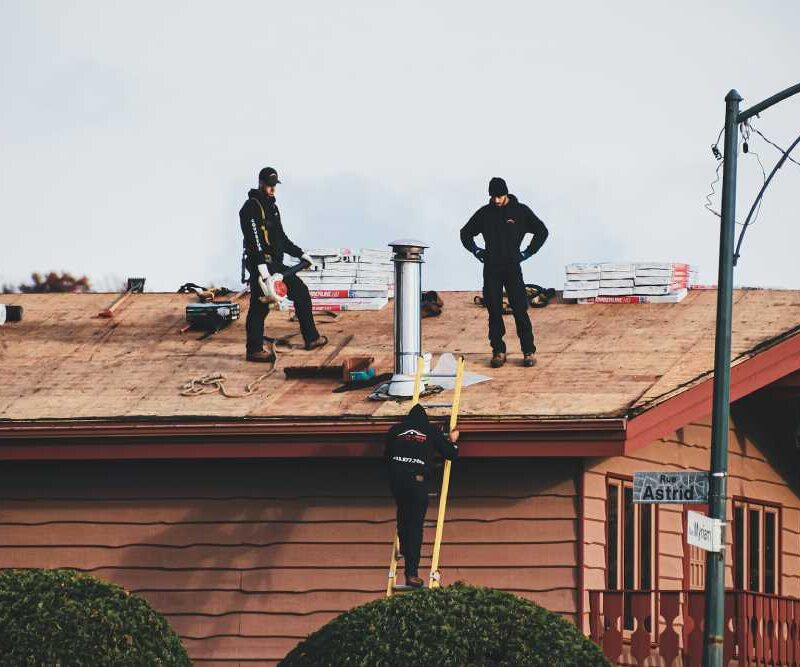While metal roofs can last up to 50 years, most roofing materials have a restricted lifespan of 20 to 25 years. When your roof’s expected life is almost up, it is time to consider replacing it.
Companies like Radiant Roofing advise homeowners to inspect their roofs regularly and factor in their age during assessments.
A study by The National Association of Home Builders indicates that different roofing materials have varying life expectancies. Knowing the type of material used on your roof is essential to determining when a replacement might be necessary.
Shingle Damage
If the shingles are damaged, it is another indication that your roof needs replacing. This may include cracked, missing, or bent shingles. Any damage to your home’s shingles can lessen their ability to shield it from the elements. On your roof, look for indications of shingle deterioration and take prompt action to fix any that you uncover.
If you find shingle granules in your gutters, your shingles are decaying and losing their protective layer. Because your roof is getting older, it needs to be replaced as soon as possible to maintain your home’s structural integrity and safety.
Water Damage and Leaks
Water damage and leaks can cause significant problems if not addressed immediately. Water stains on your ceiling or walls are a surefire sign that your roof is leaking. Leaks can result in costly issues such as mold growth and structural damage.
Family Handyman claims that little leaks can eventually do significant harm, weakening the building and resulting in unhygienic living conditions. If you see leaks or water damage, you should consult a roofing specialist so they can assess the damage and determine whether the roof needs to be repaired.
Sagging Roof
A drooping roof is a serious problem that needs to be fixed immediately. Sagging is a sign of a structural issue, frequently brought on by an accumulation of extra weight on the roof or by extended exposure to moisture. If ignored, a sagging roof might collapse and seriously harm your house.
Check your roof for any indications of drooping, and if you find any uneven spots, contact a roofing specialist. Maintaining enough ventilation and quickly handling small problems can increase your roof’s lifespan and avoid sagging.
Increased Energy Bills
It could result from a failing roof if your energy expenses have been rising consistently. It may be more difficult to keep your home at a comfortable temperature if your roof is old or damaged. Costs for heating and cooling may go up as a result.
Installing a new, energy-efficient roof in place of an outdated, inefficient one can reduce energy costs and increase the comfort level of your house. When replacing your roof, look for roofing materials with strong insulation qualities and consider improving the insulation in your attic.
Final Thoughts
Recognizing the signs that it’s time to replace your roof is crucial for maintaining your home’s safety, comfort, and value. By keeping an eye out and acting quickly when something goes wrong, you may avoid costly repairs and ensure that your roof protects your home for many years.
If you need assistance purchasing a replacement roof or have any doubts regarding the condition of your current one, feel free to see a professional.







